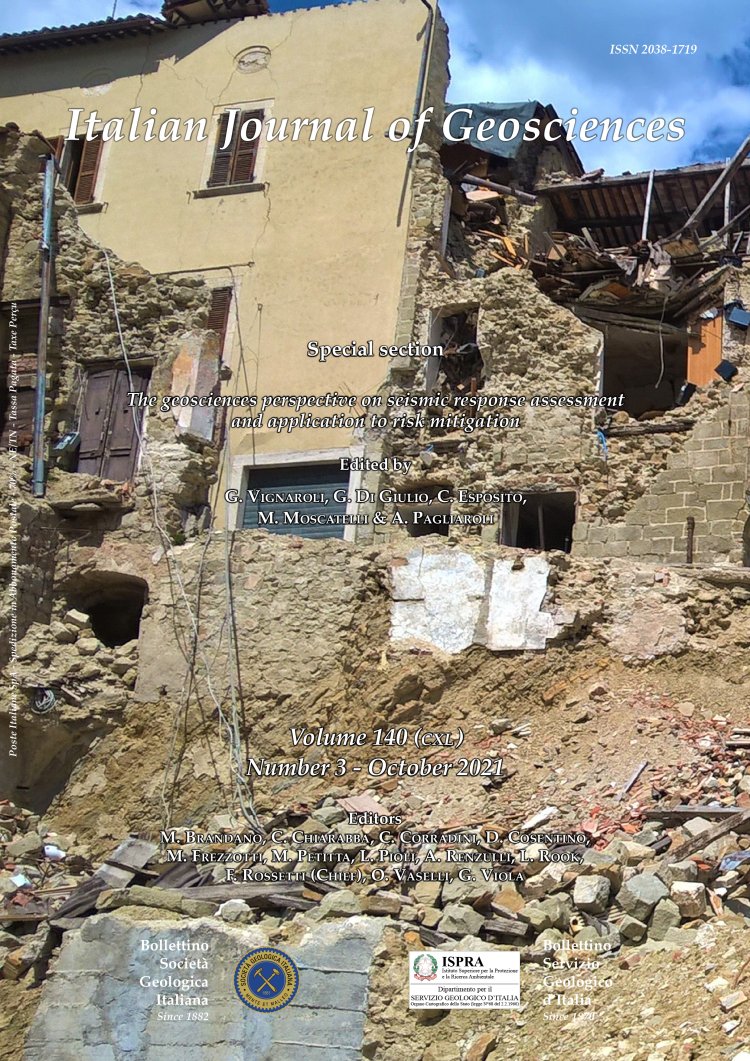
Probabilistic fault displacement hazard analysis of the Anghiari - Città di Castello normal fault (Italy)
Alessio Testa (1), Alessandro Valentini (1), Paolo Boncio (1,5), Bruno Pace (2,5), Francesco Visini (3), Francesco Mirabella (4,5) & Cristina Pauselli (4,5)
(1) DiSPUTer Department, Università degli Studi G. d’Annunzio Chieti e Pescara, Italy.
(2) InGEO Department, Università degli Studi G. d’Annunzio Chieti e Pescara, Italy.
(3) Instituto di Geofisica e Vulcanologia, Sezione di Pisa, Italy.
(4) Dipartimento di Fisica e Geologia, Università di Perugia, Italy. (5) CRUST - Centro inteRUniversitario per l’analisi SismoTettonica tridimensionale con applicazioni territoriali, Italy. Corresponding author e-mail: alessio.testa@unich.it
Volume: 140 (2021) f.3
Pages: 327-346
Abstract
Fault displacement is a localized source of hazard for infrastructure located near active and capable faults, such as critical buildings and distributed facilities. This issue can be overcome through zoning and avoidance strategies, but facilities may sometimes not benefit from this option. In the last 20 years, several authors have developed a probabilistic approach to analyse this hazard, known as probabilistic fault displacement hazard analysis (PFDHA), for both principal fault and distributed rupturing. In this work, we apply the approach proposed by YOUNGS et alii (2003) to the Anghiari-Città di Castello fault, a NE-dipping normal fault located in the northern Apennines of Italy, which shows evidence of Quaternary activity. We explore two different rupturing scenarios to obtain displacement hazard curves and maps for different probabilities of exceedance in 200 years at different distances along and from the principal fault trace for both the principal and distributed rupturing. The expected displacement values for the principal fault rupturing are up to 130 cm for a return period of 10,000 years (2% in 200 years), and the distributed rupturing hazard is 3–4% of the principal fault rupturing hazard. It is null in the footwall of the fault and slightly variable in its hanging wall as a function of distance from the fault trace and fault tip. The variability of the distributed rupturing hazard within the first hundreds of metres from the principal fault can assist to define mitigation strategies for existing facilities located in proximity of the fault.
Keywords
Get Full Text